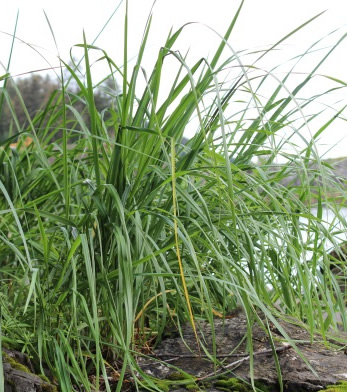Lyme Grass/Beach Grass

Botanical Name: Elymus arenarius
Common Name: Beach Grass
Other Names: wegpak, weg’et (big grass, grass in general)
Found in: salt water beaches
Physical Characteristics: Tall stout, course grass
Nutritional Value: not eaten
Parts of the plant used: leaves, stems
When plant should be gathered: June to September. Taperrnat - Coarse seashore grass, harvested after fall freeze-up and in the spring
Plant applications: baskets, mats
Reported Benefits: Grass storage baskets, grass mats to sit and lie upon
Preparation/Processing: Grass storage baskets were traditionally made to hold dried fish, roots, and meat; other types were for gathering beach foods and plants. Small, round, lidded baskets like this one were invented in the nineteenth century and made primarily for sale. Designs were added using dyed grass, split spruce root, silk embroidery thread, and yarn. Grass for baskets is gathered in the summer on coastal hillsides; the weaver bundles, ages, sorts, dries, and splits the stems to prepare them. At least eight weaving patterns are historically known.
Once cut, beach rye must be bleached and dried to create material suitable for weaving. First, the grass is wrapped in burlap bags and left to cure. Over a period of two weeks it is repeatedly aired to prevent mold. Next, the grass leaves are removed from their stems, sorted into pieces of similar length, color, and texture, and hung to dry. Sunshine or a saltwater bath helps in bleaching the grass to a pale brown. When drying is complete, the weaver removes the midrib from each leaf and splits the remaining plant tissue into strands of desired thickness.
FYI: Grass for baskets is gathered in the summer on coastal hillsides; the weaver bundles, ages, sorts, dries, and splits the stems to prepare them. At least eight weaving patterns are historically known.
In classical Alutiiq society, weaving has always been both a functional and aesthetic art. Woven objects were essential to many tasks, yet each was typically made with great care and many were decorated. Today, baskets are made and collected as an art form. Basket weaving remains a women's skill, taught through individual instruction, communal weaving and experience. Weaving symbolize pride in Native heritage and the passage of knowledge from one generation of women to the next.
